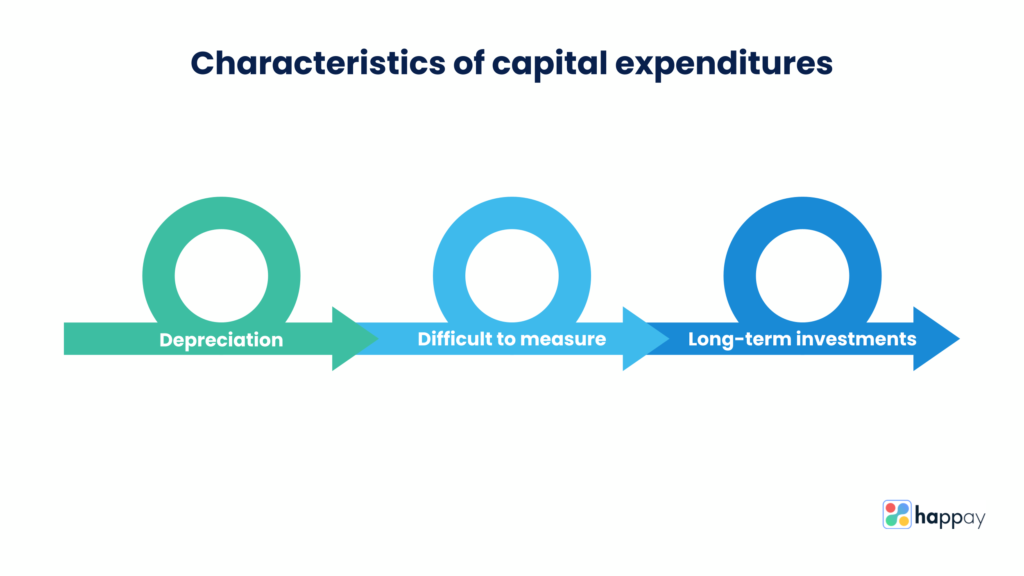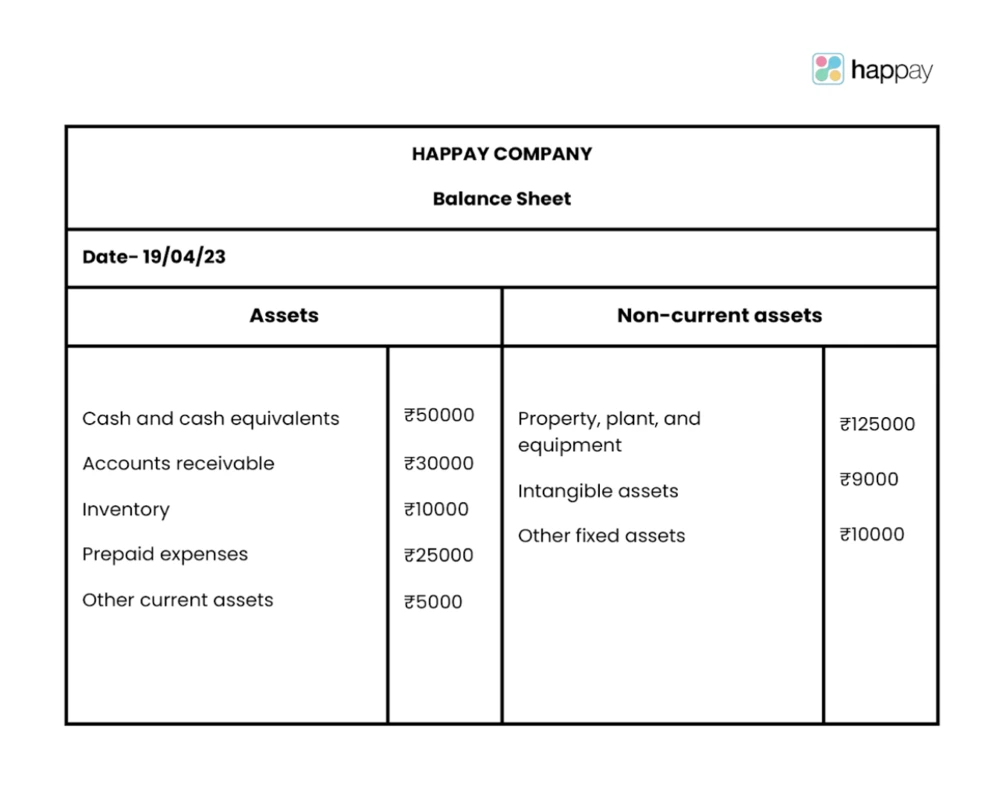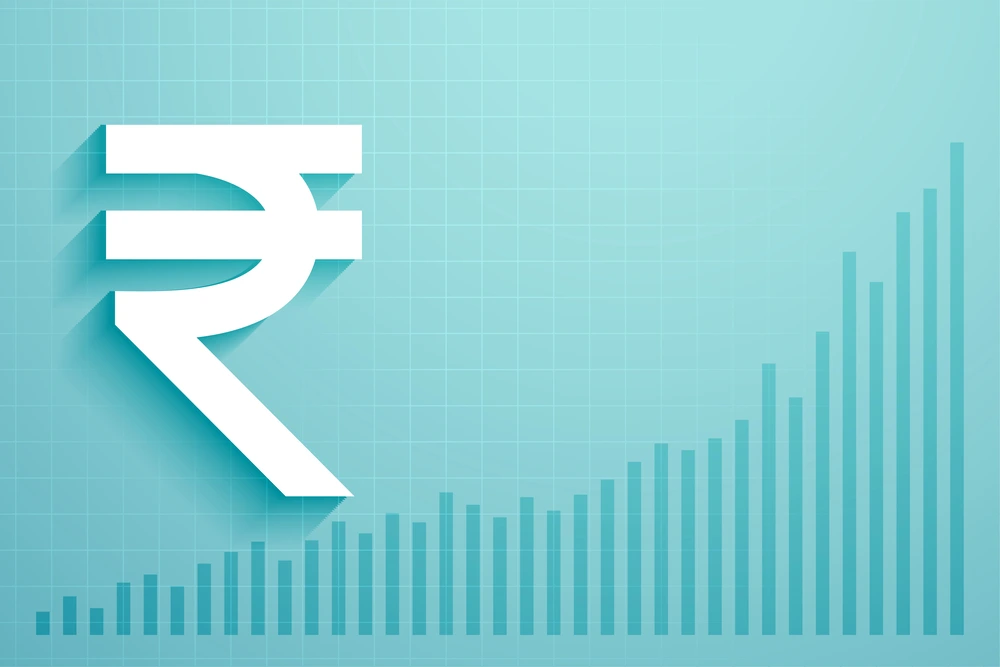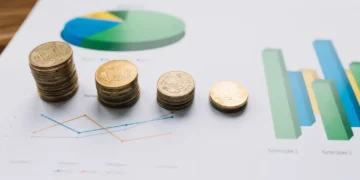Last Updated on November 28, 2025
Capital expenditure (or) capital expenses
The physical, fixed assets lay the foundation for the business. They enable the production and manufacturing of the business’ main offerings and facilitate the overall functioning of the business.
Fixed assets comprise a major part of the business, and naturally, account for most of the initial business expenses. The costs incurred during the purchase and maintenance of fixed assets are known as capital expenditures.
Capital expenditures (Capex full form) facilitate core business activities. In this guide, we will discuss capital expenses in depth. We will learn about the types, importance, characteristics, and issues involved in capital investments.
Quick Read: 10 Best Asset Management Software Systems
What is capital expenditure?
Capex meaning
Capital expenditure is the sum total of all money spent to obtain, upgrade, manage, fix, or maintain physical assets of the company, such as plants, land, machinery, technology, or buildings. They are used during the conception of the business and later during the start of a new project, branch, or investment.
When does a business incur capital expenses?
A business decides to incur capital expenses when they are planning to increase its asset value, expand the range of operations, increase profit-generating activities, and eventually derive more benefit from the assets.
Essentially, a company will spend on capital assets for one of three reasons: maintenance, growth, or expansion.
What is capital expenditure in accounting?
Capital expenses appear on the balance sheet and not the income statement of a business. The capital expenditure amount is calculated as an asset on the balance sheet.
Fixed assets have a depreciation factor. This means that every year their effective value reduces by a certain percentage. This depreciation cost is then recorded on the income statement as an expense and reduces the overall profit of the year.
For example, if a company buys a set of computer systems for its employees, the cost of the computers will be recorded under the balance sheet. These computers will have a certain depreciation value. Let’s say, their total depreciation amount is 10,000 INR per year. For the years that follow the purchase of computers, the income statement will report a depreciation expense of 10,000 rupees.
Capital expenses do affect the income statement of the company. But it does not happen in the year of their purchase, but in the following years as per the depreciation value of the assets obtained.
Quick Read: Financial Accounting: Definition, Types, Functions & Examples
Types of capital expenditure
Let’s discuss a few types of capital expenditures in detail.

1. Buildings, land, and property
The cost of buying a building, property, or any piece of real estate is a capital expense since these assets are relevant to the business for many years. Maintaining and repairing these buildings are also capital expenses. These are long-term assets and require a high level of commitment and investment.
2. Upgrades to machinery
The machinery and equipment used to develop products are unavoidable expenses for businesses. This equipment and its needs evolve with time and the changes in technology. Any upgrades made to existing machinery are capital expenditures.
3. Software Infrastructure
Nowadays, it has become impossible for many businesses to function without certain software. Whether it is management software or a cyber security infrastructure, digital solutions form the backbone of many administrative processes, especially for large businesses. The cost of purchase, installation, maintenance, and upgradation of this software is a capital expenditure.
4. Computer hardware
The cost incurred from buying computer hardware like desktops, laptops, servers, etc. is also classified as a capital expense.
5. Vehicles
Certain companies need to own multiple vehicles to carry out their operations. For example, delivery and shipping companies heavily depend on vehicles for transportation. The cost of these vehicles then becomes a capital expense.
Quick Read: Working Capital: What is it, Types, Formula & How to calculate it?
Capital expenditure examples
Here are a few examples of capital expenses.
- Buildings
- Land
- Machinery and capital equipment
- Patents
- Company vehicles
- Licenses
- Trademarks
- Copyrights
- Technology
Quick Read: Cost of Capital: What is it, Types, Formula & How to calculate it?
Importance of capital expenditure
Capital expenses are important because they help organizations set up operations. Without capital investments, a business cannot start functioning. Also, post set-up and launch, capital expenses help scale up the company’s operations and initiate growth.
Here is a list of functions that capital expenses facilitate-
- Acquisitions – Capital expenses facilitate the acquisition of property, machinery, or equipment.
- Expansion – Expansion expenses facilitate the improvement of facilities, development of infrastructure, and increase in existing assets and physical capacity.
- Set-up and launch – Capital expenses help organizations buy the property and machinery needed to set up the business.
- Growth- Capital expenditures help scale up the organization with new equipment additions and upgrades. They are used to accelerate business operations and increase efficiency.
Quick Read: Expense Vs Expenditure
Characteristics of capital expenditures

1. Depreciation
As discussed above, one of the most important things to consider while investing in a fixed asset is that its value will depreciate over time. Depreciation continues throughout the life of a fixed asset and brings the value down every year.
Read More: Depreciation: What is it and How to Calculate it?
2. Difficult to measure
Measuring, calculating, and accounting for capital expenses and their depreciation value can be tricky.
3. Long-term investments
Costs related to fixed assets are long-term investments. Their benefits and costs are stretched over the years.
Capital expenditure (CapEX) formula
When the net change in property, plant, and equipment costs and current depreciation are known
CapEx= ΔPP&E+Current Depreciation
Where:
Δ= Net change in
PP&E= Property, plant, and equipment costs
CapEX alternative formula
When free cash flow to equity or FCFE, Debt Ration, Depreciation, and Earnings per Share is known
FCFE= Earnings per Share-(CapEx-Depreciation) x (1- Debt Ratio) – ΔNet capital x (1- Debt Ratio)
How to calculate capital expenditures?
Follow these steps to calculate capital expenditure.
- Step 1: Cashflow statement
You can find CapEx in the cash flow statement of the company. Cash outflow from investing activities is capital expenditure. The representation of capital expenditure on financial statements may differ based on the company. Sometimes, it is listed as ‘capital spending,’ ‘PP&E expense’ or ‘acquisition expense.’ You can also learn about capital expenses by studying the income statement and balance sheet.
- Step 2: Deduct fixed assets
Find the depreciation amount for assets on the income statement for a specific period of time. Find the period’s plant, equipment, or property line-item balance. Now find the former period’s PP&E balance and calculate the difference between the current and previous balances.
- Step 3: Add the difference to depreciation
Add the difference between the current and past PP&E balance to the depreciation amount of the current period. You will then get the current- accounting period capital expenditure.
Recommended Read: What are Non-operating Expenses?
Example of how to use CapEX?
CapEx (Capital Expenditure) is used when a company invests in long-term assets such as property, plant, and equipment (PP&E) that will provide long-term benefits to the company by increasing efficiency, productivity, and profitability. These expenditures are typically large in nature and have a useful life of more than one accounting period.

Capex on the cash flow statement
CapEx is reported on the cash flow statement as an outflow of cash from the investing activities section. This section shows the cash inflows and outflows related to the purchase, sale, and maintenance of long-term assets, such as property, plant, and equipment.
The CapEx amount is important in the statement because it helps investors and analysts understand how much cash a company is investing in its long-term assets. If a company is consistently investing a large amount of cash in CapEx, it may indicate that the company is growing or improving its operations. Conversely, a decrease in CapEx may indicate that the company is not investing in its long-term assets, which could negatively impact its future growth prospects.
Capex on the balance sheet
CapEx is reflected on the balance sheet as an increase in the property, plant, and equipment (PP&E) account. PP&E is a long-term asset that represents the company’s investment in its physical assets, such as buildings, equipment, and land. It is the only expenditure that is reported on the balance sheet.
CapEx is important to represent on the balance sheet because it represents the company’s investment in its long-term assets. A company that consistently invests in CapEx may have a higher valuation because it is seen as investing in its future growth prospects.
Capital expenditure and depreciation
Definition of Capital Expenditure and Depreciation
Capital expenditure (CapEx) is the funds that a company invests in long-term assets such as property, plant, and equipment (PP&E). Depreciation is the method of accounting for the gradual loss of value of these long-term assets over time.
Relationship between Capital Expenditure and Depreciation
CapEx and depreciation are closely related because CapEx is depreciated over its useful life. It is recorded on the balance sheet as an asset and then gradually written off over its useful life on the income statement as a depreciation expense.
CapEx Vs OpEx
Definition of CapEx and OpEx
CapEx refers to the funds that a company invests in long-term assets such as property, plant, and equipment (PP&E). OpEx (Operating Expenditure) refers to the funds that a company spends on day-to-day expenses such as office rent, subscriptions, utilities, etc.
CapEx (Capital Expenditure) |
OpEx (Operating Expenditure) |
|
Funds invested in long-term assets |
Funds spent on day-to-day expenses |
|
Provides long-term benefits to the company |
Provides short-term benefits to the company |
|
Mostly large in nature and often non-recurring |
Typically small and recurring costs |
|
Examples: purchase of new machinery, construction of new building |
Examples: employee salaries, office supplies |
Read More: CapEx vs. OpEx: A Guide to Understanding the Differences
Issues with capital expenditures
As discussed in the section above, there are certain risks associated with capital expenses and budgeting.
1. Risk and unpredictability
Capital investments are high-value investments and account for a very large part of the business’s total initial spend. However, companies gladly make these investments because they believe that fixed assets are gonna yield the desired results in the long run.
However, nothing is a given in the business world and every investment comes with a risk. Capital expenditures also run the risk of losses. Hence, while making the initial financial plan, the finance leaders should ensure that they have accounted for all the probable risks and possible losses to mitigate the effect they will have on the business.
2. High-initial costs
Companies use fixed assets for a long time. It hence goes without saying that these assets have to be apt for extended company use without a significant decline in performance. Hence, fixed assets have considerably high costs.
Capital expenses also increase with the increase in time, especially the costs associated with maintaining and upgrading fixed assets.
3. Irreversible
It is extremely important for businesses to do due diligence and need analysis before buying a major fixed asset. This is because fixed assets are not only high-value expenses but also because they are difficult to reverse.
Additionally, many capital assets are tailor-made according to a company’s needs. This makes it almost impossible for businesses to replace them with other assets.
Also, Read: SG&A Selling, General and Administrative Expenses
Capital expense management – Best practices
1. Plan ahead
It is very important for finance officers to prepare a budget for capital expenses ahead of making any purchases. Since capital expenses are costly, irreversible, and irreplaceable by their very nature, even small decision-making missteps can lead to huge losses.
Before investing in a new fixed asset, make sure that the scope and expectations of the asset are realistic. Work out as many details as possible including exactly how many resources the asset will require to become functional and profitable. This includes not only monetary considerations but also materials, services, and manpower.
2. Decide how you will buy the asset
Buying a capital asset requires considerable funds. If you cannot immediately afford an asset, you can borrow money to purchase it. Assess your company’s financial standing and the urgency for a particular asset before making the decision.
3. Use the right budgeting and accounting tools
Adopt efficient budgeting and accounting tools for capital budgeting that complement your capital expense policies. Accuracy of data is crucial while managing any kind of expense. Hence, investing in budgeting or spend management software will be a smart move for capital expense management.
What is capital expense management software?
Capital expenditure management software automates the planning and budgetary functions of complex CapEx decisions. They tell you how your capital investment decisions can affect your organization in the long run.
Capital expenditure management software can also provide a centralized platform for communicating with stakeholders. For example, a collaborative platform for coordinating with advisors, bankers, investors, etc.
Here are five capital expenditure management software.
- Anaplan
- Capexplan
- Finario
- Kepian
- NextProcess
Also, Read: TOP 10 Financial Planning Tools That Accelerate Growth
Empower your expense policy with Happay
Capital expenses are one of the biggest investments that a company makes. It is hence imperative for the decision-makers to understand how capital expenses function in the long term.
The first step to capital expense management is devising a policy that details the steps required before new investments. The next step is to pair up that policy with a platform to support it and ensure compliance.
Happay is an end-to-end expense management software that comes with advanced analytics. It allows 100% visibility into employee spend behavior and it can allow you to access the information needed to create budgets. The base-level spend visibility translates into high-level and capital-expense budget decisions.
Conclusion
Capital expenses aid the conception, expansion, and growth of a business. They are generally big investments with high risks. Before investing in capital assets, it is crucial to research the assets and do a cost-benefit analysis for both the long and short term. This will not only safeguard you against loss but also ensure the future growth of your business.
FAQ’s
CapEx stands for capital expenditure or capital expense.
“Useful life” of a capital expense is the number of years for which it remains usable before reaching complete accumulated depreciation.
Capital expenses facilitate the purchase of long-term capital assets like land, building, intellectual property, etc.
Operating expenses, also known as operating costs or opex, pay for the day-to-day operations of the company and are majorly recurring like rent, electricity, sanitation, etc.
Yes, costs like intellectual property expenses, patent costs, etc. are intangible capital expenses.
When raw materials are used for the manufacturing or production of capital assets, they are included in capital expenses.
Capex is defined as the money a company or corporation spends to purchase, upgrade, or maintain its fixed assets like buildings.
The capital expenditure budget is the money allocated for the upgrade, purchase, or maintenance of fixed assets (capital assets).
When an asset is useful for less than one year, it is accounted for on the income statement and is not considered a capital expense.
Capex budget refers to a financial plan that outlines the expected capital expenditures that a company will make over a certain period. It includes the amount of money that the company plans to spend on long-term assets such as property, plant, and equipment.
Capex model refers to the financial model that is used to evaluate the potential returns on investment in capital expenditures. It involves estimating the costs and benefits associated with the investment and determining whether the investment is financially viable.
Capex procurement refers to the process of acquiring the assets needed for a capital expenditure project. This can include sourcing suppliers, negotiating contracts, and managing the delivery and installation of the assets.
Capex planning refers to the process of identifying and prioritizing capital expenditure projects based on the company’s strategic objectives, financial resources, and other factors. It involves evaluating the potential costs and benefits of each project and selecting the ones that are most likely to generate a positive return on investment.
Capex cycle refers to the process of planning, budgeting, procuring, implementing, and monitoring capital expenditure projects. It involves managing the entire lifecycle of the project, from the initial planning phase to the final implementation and evaluation.
Capex (capital expenditure) refers to the money a company spends on acquiring or improving its long-term assets, such as property, plant, and equipment, with the expectation of generating future benefits. On the other hand, revenue expenditure refers to the money a company spends on its day-to-day operations, such as wages and salaries, rent, and utilities. While revenue expenditure is expensed in the period it is incurred, capex is capitalized on the company’s balance sheet and depreciated over time.
Read More: Difference Between Capital Expenditure and Revenue Expenditure
Capex (capital expenditure) is a type of long-term investment that a company makes to acquire or improve its long-term assets, such as property, plant, and equipment. These investments are expected to provide benefits over a period of several years and are typically considered essential for the company’s operations and growth.
Capex (capital expenditure) is not typically tax-deductible in the year it is incurred, as it is considered an investment in the company’s long-term assets. However, the cost of the asset can be depreciated over time, which can result in tax deductions in future years.
Capex (capital expenditure) can be calculated by comparing the values of long-term assets on a company’s balance sheet from one period to the next. The increase in long-term assets from one period to the next represents the amount of money that was spent on capital expenditures during that period. Alternatively, capex can be calculated by subtracting the accumulated depreciation of long-term assets from the original cost of those assets.








Discussion about this post